SHIMLA: Under the brilliant sun that now graces the rain and flood-weary hills of Shimla, the city has reverted to its familiar avatar – the lively Mall and Ridge bustling with both tourists and locals.
However, the stark truth remains: the recent nightmares that residents endured must not be forgotten. The aftermath of heavy rains, landslides, and cloudbursts laid bare the grim results of negligence. Tragic incidents had thrown the city into chaos and marooned it intermittently at regular intervals for days.
Any hint of complacency at this point would be an open invitation, should we dare speak of it, to a fresh series of disasters akin to what unfolded from July 7 to July 11, and then again in the second week of August.
While the city now hums with life, the specter of complacency looms large. The disasters that struck from July 7 to 11, followed by another onslaught in August, stand as stark warnings of what could recur if lessons remain unlearned.
Shimla's plea is loud and clear – it needs a robust drainage system to shield itself from the impending catastrophes that left the city marooned.
Shimla urban MLA Harish Janartha and Mayor Surender Chauhan acknowledge this urgency. They vow to revamp the drainage system, meticulously identifying vulnerabilities to prevent future damage during extreme weather events.
Before these words turn into actions, let's revisit the incidents that scarred Shimla.
A cloud burst in the vicinity of the Indian Institute of Advanced Studies near Summerhill triggered a devastating flash flood that led to the Shivbaudi horror that claimed 20 innocent lives including couple of families who perished in the calamity, leaving them shattered and the entire community in mourning.
Though the geologists are on the job as to what happened there. But it appeared that Debris might have dumped there when the outlaying lawns of the then Viceregal Lodge were laid by the then Britishers. 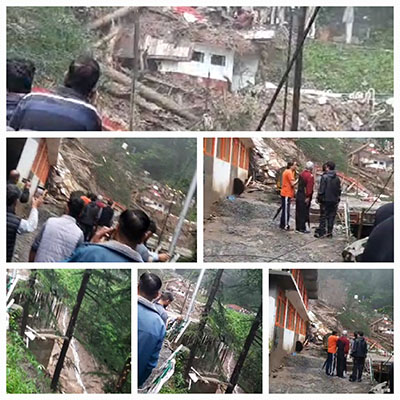
The neighbouring areas of Krishanagar and Tuttilkandi faced a similar fate. Some houses were allowed along the streams and steep weak bulging slopes which collapsed like a house of cards due to the falling trees on them, which were uprooted due to loose strata washed away by the rain water.
The inadequate drainage infrastructure and loose strata failed to cope with the torrential downpour.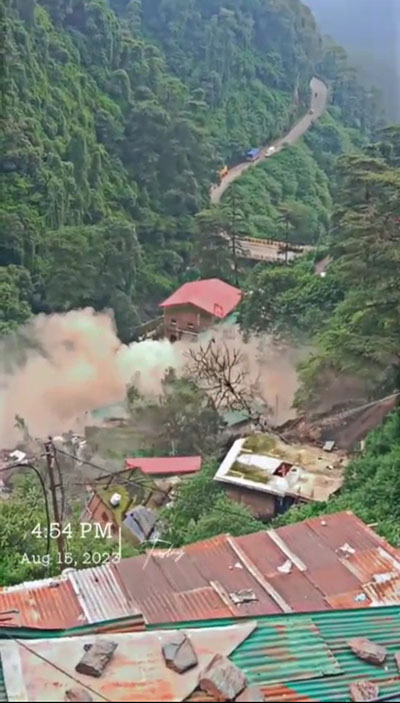
In fact. the combination of heavy rains and inadequate drainage system led to flash floods and landslides that wreaked havoc, claiming the lives of 26 individuals and causing extensive damage to homes and properties.
Even more alarming was the situation in Forest Colony, near Tara Mata Mandir in New Shimla, where over 50 big deodar trees collapsed one by one. The lack of proper drainage together with the dumping of debris on the slopes contributed to disastrous landslides accentuated by the heavy rains, which was the main cause.
The very foundation of the city's healthcare system was shaken when the basement of the prestigious IGMC hospital was inundated due to flooding caused by dumping of the debris from under construction treatment of Lakkar Bazar nalla that flows near the IGMC hospital, which also failed to clear the clogged drains.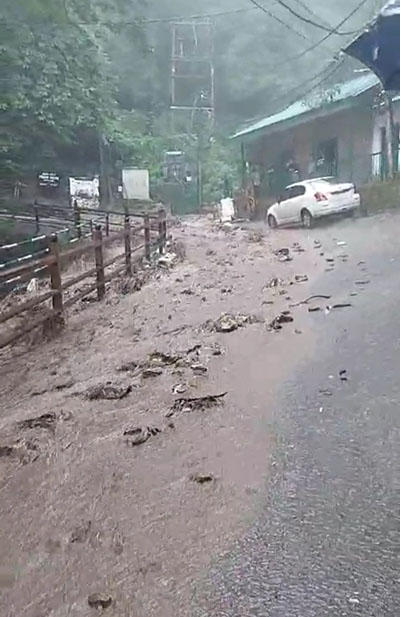
This in turn had jeopardized patient care and posing a serious threat to public health.
As if these incidents weren't enough, the scenic beauty of Shimla suffered a major blow when the Nav Bahar area also witnessed cloud burst. It struck its blow into the middle of forest area, that led to the loss of over 100 deodar trees, not only causing environmental devastation but also increasing the vulnerability of the areas like Shanan in the peripheries of city to future disasters.
The severity of these incidents has brought to light the urgent need for a comprehensive overhaul of Shimla's drainage systems and infrastructure.
The negligence of not only civic authorities but also contractors responsible for various projects, including those under the Smart City initiative, has resulted in catastrophic consequences for the city and its residents.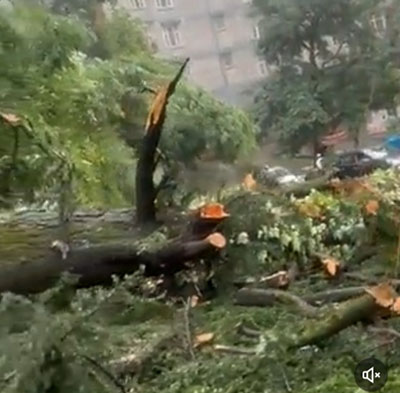
The pedestrian path and subway near the Leeladhar Shop were inundated as the Smart city contractor did not lay the proper drain. The storm water flooded the subway and resulted in uprooting of over 7 trees that wiped out the link road endangering the Houses nearby.
The contractors responsible for negligence can be brought to book by simply checking the work allotment list of the Shimla smart city projects.
The NHAI and PWD widened the road and laid the retaining wall leaving a portion vulnerable to storm water at the bifurcation of the BCS-Khalini and Forest Colony-Jhanjhiri road.
The flooded water entered through this portion and uprooted over 27 trees while five more stand tilted. The flood water exposed the shallow root system of the deodar trees, which finally uprooted one by one falling on other and smashed cars parked in the Forest colony.
It also stands exposed that deodars on the steep hill slopes need greater protection and care as they can not withstand the heavy storm water on the hill slopes.
The dumping of debris in deodar jungle is nothing less than sowing the seeds of calamity downstream as the uprooted tree can spell doom for dozen other in its immediate catchment.
The pathetic plight of many flats and blocks in HIMUDA colony in Sector 5 Kagnadhar sound an alert for the government-run housing agency. HIMUDA cared two hoots to lay the proper drainage system in all of its multi-storied blocks in New Shimla. As many as 45 flats are in a shambles posing threat to very existence of the buildings due to poor maintenance.
Due to proactive councillor of Kagnadhar, Ram Ratan Verma, the drains along the main road and streets were cleared before and during the rains, no damage was done. He has set example for others to follow.
He has taken the matter of Himuda colony flats with the Chief Minister seeking his directions to the HIMUDA and all owners who are not maintaining the drains and flats and gutter for proper drainage in the ward. 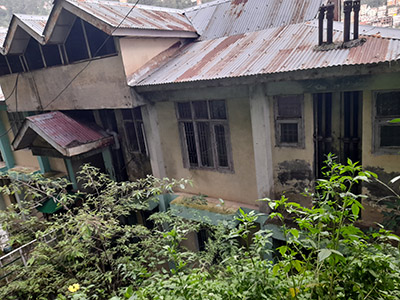
The fate of multiple storied building which was vacated by their flat owners near the ST Edwards School during the rains when the landslide occurred there, hangs in balance.
After its inspection, Shimla municipal corporation has given go ahead to the company to erect the retaining wall from the Talland-Himland road, but it remains a big challenge as any flaw can be disastrous for the public.
While provisions within the Himachal Pradesh Municipal Corporation Act of 1994 clearly outline the responsibilities and regulations concerning drainage and sewage, debris disposal, the lack of enforcement and accountability has proven to be a fatal flaw.
The time has come for authorities to not just acknowledge the existence of these laws, but to enforce them rigorously to prevent further loss of life and destruction.
In the face of these tragedies, concerned citizens are now demanding immediate action. The formation of a dedicated committee comprising urban planning experts, civil engineers, environmentalists, and knowledgeable councillors has been proposed.
This committee's mission would involve a meticulous evaluation of the existing drainage systems, identification of vulnerabilities, and the development of practical solutions to prevent such catastrophes in the future.
The events of recent days have served as a grim reminder that nature's fury spares no one. It is the responsibility of every stakeholder, from civic authorities to contractors, to prioritize the safety and well-being of Shimla's residents.
The tragic loss of lives and the extensive damage suffered by the city should serve as a wake-up call, prompting a swift and concerted effort to rectify the glaring flaws in its drainage systems and infrastructure.













